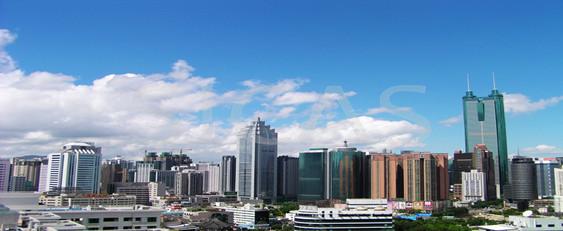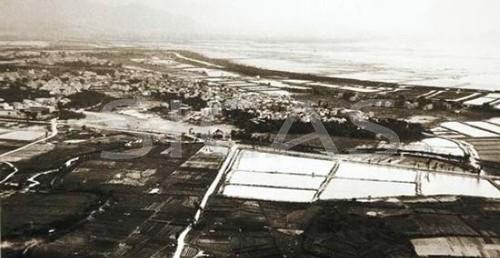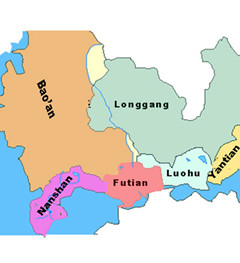 |
Shenzhen is China`s first—and one of the most successful—Special Economic Zones (SEZs). It is a major city in the south of Guangdong Province, situated immediately north of Hong Kong. The area also holds sub-provincial administrative status, with powers slightly less than a province.
Being southern mainland China's major financial centre, Shenzhen is home to the Shenzhen Stock Exchange as well as the headquarters of numerous high-tech companies. Shenzhen is also one of the busiest container ports in China.
Administrative Divisions and Population
Shenzhen was originally a hilly area, with fertile agrarian land. However, Shenzhen underwent tremendous change in landscape after becoming a special economic zone in 1979. The once hilly fishing village is now replaced by mostly flat ground in city center area, with only Lianhua Shan (Lotus Hill), Bijia Shan (Bijia Mountain) and Wutong Shan the only three places that have some kind of elevation as viewed from satellites. With the influx of migrants from inland China, Shenzhen is experiencing a second stage boom, and it is now expanding peripherally and the hills in surrounding areas.
Shenzhen is located on the border with the Hong Kong SAR across the Sham Chun River and Sha Tau Kok River, 60 kilometres (37 mi) south of the industrial city of Dongguan, 100 kilometres (62 mi) southeast of the provincial capital of Guangzhou,and 60 kilometres (37 mi) north-northeast of the resort city of Zhuhai.
Though Shenzhen is situated about a degree south of the Tropic of Cancer, it has a warm, monsoon-influenced, humid subtropical climate due to the Siberian anticyclone. Winters are mild and relatively dry, due in part to the influence of the South China Sea. Early spring is the cloudiest time of year, and rainfall begins to dramatically increase in April; the rainy season lasts until late September to early October.The region is prone to torrential rain as well, with 9.7 days that have 50 mm (1.97 in) or more of rain, and 2.2 days of at least 100 mm (3.94 in).The latter portion of autumn is dry. The annual precipitation averages at around 1,970 mm (78 in), some of which is delivered in typhoons that strike from the east during summer and early autumn.
Administrative Divisions and Population
Shenzhen is a sub-provincial city. It has direct jurisdiction over eight districts :
The Special Economic Zone (SEZ) comprised only Luohu, Futian,Nanshan, and Yantian districts until 1 July 2010, when the SEZ was expanded to include all districts, a fivefold increase over its pre-expansion size.
|










